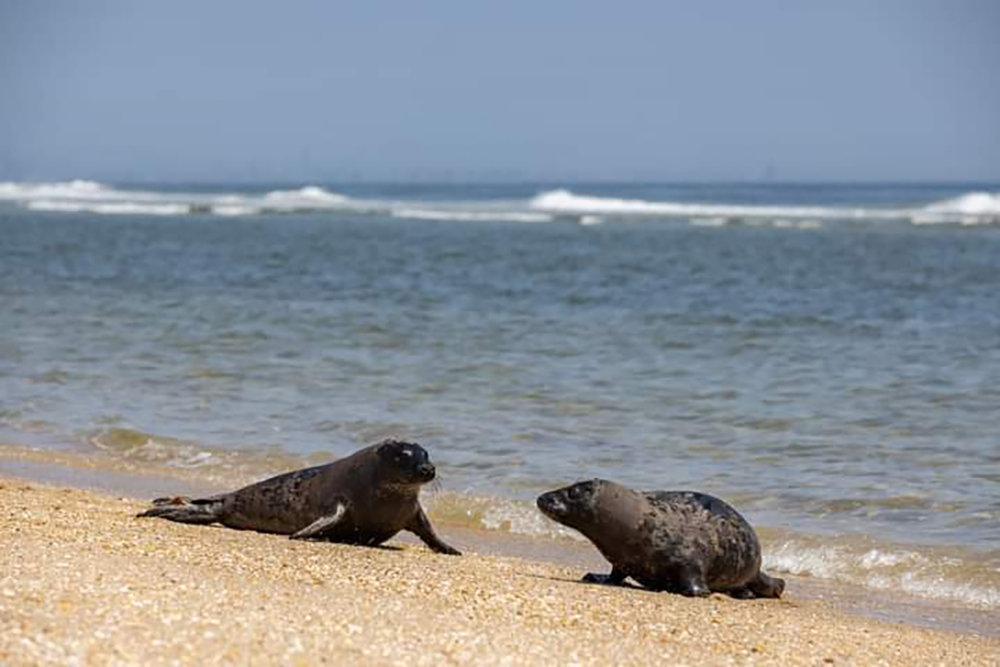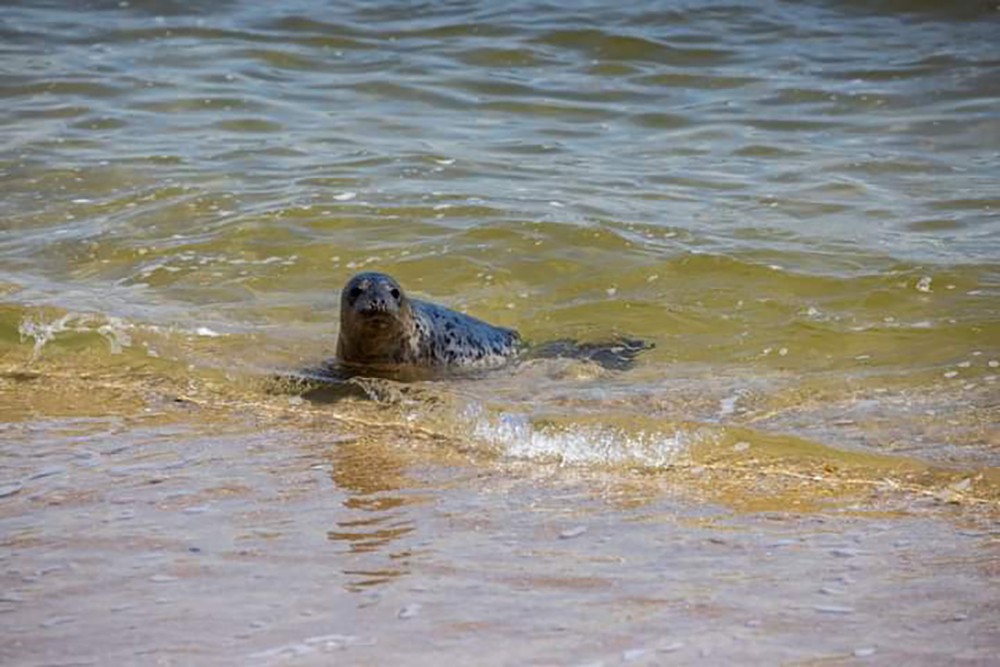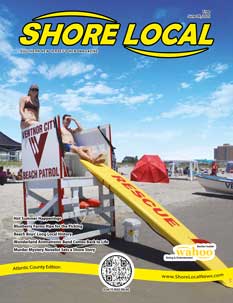By Julia Train
The Marine Mammal Stranding Center released two of its 16 seal pups Tuesday morning live on the Today Show amidst a busy season.
MMSC is a 501(c)(3) located in Brigantine dedicated to rescuing, rehabilitating and releasing marine mammals.
The nonprofit checks on injured seals that are called into their hotline by beachgoers along the Jersey Shore.
Here’s what to do when you spot an injured seal
Leave it alone. Healthy seals will defend themselves aggressively if you try to pet them.
Keep yourself, children and your dog at least 150 feet away, more if the seal is alert to your presence.
Do not post the locations of seals on social media because that will drive more people to the scene.
Call MMSC’s 24-hour hotline: (609) 266-0538 so that staff and certified Stranding Volunteers can assess the situation.
Seal fun facts, according to World Animal Protection US
Seals sleep on land and water! They sleep on land when they have pups or are searching for warmth and in water when they’re in the position of “bottling,” which is where their bodies (except for their snout) remain completely underwater.

Photo by Michael McKenna
Seals can hold their breath! Harbor seals can hold their breath for up to 30 minutes and elephant seals can for up to 2 hours because they pack large amounts of oxygen into their muscles without “clogging them up.”
There’s another name for the mammal! Seals and sea lions belong to a group of marine mammals called “pinnipeds.” In Latin, “pinniped” means “fin-” or “flipper-footed.”
There are currently 33 different species of seals! The largest seal species is the Southern elephant seal, and the smallest is the ringed seal.
Although not endangered or nearly-endangered, seals are federally protected.
Outside of the breeding season, seals are not social! They also don’t travel in family groups like dolphins would.
Their instincts will guide them north to the Nantucket Sound, Gulf of Maine and Canadian waters where they will congregate in colonies seasonally to breed and give birth, according to MMSC.
What happens when they’re released
According to its website, when releasing seals, the MMSC staggers opening the crates to observe the behavior of each seal for a few moments before releasing the next. They don’t go very far at first, so it is easy for the seals to quickly find each other in the water if they wish.
Ways to help out
Do you want to help these cute creatures? Luckily, there are a couple options through the MMSC.
You can donate money flat out through mailing a check to their P.O. Box. Donations help provide critical veterinary care, medication and food.
Partake in a “Symbolic Animal Adoption”

Obtain an annual membership
Help the MMSC get the supplies needed to take care of the mammals by purchasing from its Amazon wishlist
Volunteer your time with either being a Stranding Volunteer, which physically rescues the seals, or as an Education and Outreach Volunteer, who give tours at the Sea Life Museum, and assist with education programs and special events.














